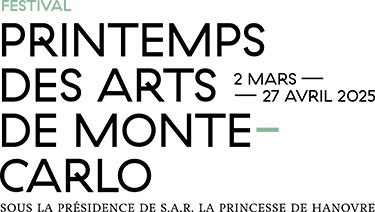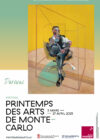“My beloved piano. It has shared all my sensations, all my tears as well as all my joys. All the high feelings I cannot translate, the piano says for me”, the young Robert Schumann noted at 17. Like Chopin and Liszt, he sensed that the keyboard instrument would be his acoustic laboratory and the ideal mediator of his poignant imagination. In 1839, when he was about to broaden his horizons, he would still assert: “Piano music constitutes an important chapter in the modern history of music: it is in piano music that the dawn of a new musical genius first manifested itself.” His credo was all the more vibrant given that, as soon as he arrived in Leipzig, he had met little Clara Wieck, 8 and a half, a prodigious pianist and composer, daughter of music teacher Friedrich Wieck, whose student he immediately became. From that day on, conquering the “angel-child” would be the emotional and spiritual adventure of his life as an artist.
At 21, the “Gemini” who hears “inner voices” gives birth to his Doppelgänger, his doubles: the tender Eusebius and the fiery Florestan. And immediately places these two facets of his personality under the aegis of Meister Raro, his superego, which refers to Meister Wieck but stems from ClaRaRobert’s prophetic androgynous union: “Posterity must look upon us as one heart and one soul.”
“To play an instrument, you have to make one with it. If you don’t play with the instrument, you don’t play it”, says the playful composer, who plays with sonic enigmas and excels at conjuring the unexpected from his keyboard, without forgetting to be a rigorous master builder when it comes to assembling the flashes of genius that spring from his piano. A reader of visionary writers Jean Paul [Richter] and E.T.A. Hoffmann, but also of the great Goethe, he never neglected the necessary principle of the “organic”: everywhere, a four- or five-note motto organises and channels his imagination to the very limits of extravagance.
From the Variations Abegg, Op. 1 (1831) to the Geistervariationen (1854), Schumann’s piano corpus includes a number of collections of pieces (Stücke) in the Romantic poetics of the multiple fragment. Whether they have a generic title (Papillons, Davidsbündlertänze, Kreisleriana, Novelletten, Humoreske, Romanzen, Nachtstücke) or internal titles (Carnaval, Kinderszenen, Phantasiestücke, to the very late Waldszenen), these astonishingly original cycles illustrate the “new poetic age” (“eine neue poetische Zeit”, from the Greek poiêsis, creation) which the composer, an early founder of the avant-garde journal Neue Zeitschrift für Muzik, called for. The multivocal concept of fantasy-humoresque, touching on the metaphysics of art, characterises Schumann’s mental space.
The whimsical Variations on the name Abegg, Op. 1, which waltzes through the five letters/notes (A-B-E-flat-G–G) and their retrogradation, is an immediate demonstration of this newness. After five dreamy, capricious or brilliant variations, the motto miraculously tinkles in the Finale alla fantasia with successive finger withdrawals.
Drawn from Jean Paul’s novel Flegeljahre (The Ungrateful Age), Les Papillons Op. 2 launches the three-beat masked carnivals of swirling passion and duality featuring the twins Walt and Vult’s love for Wina. Romantic irony emerges in the Grossvatertanz, the grandfather’s dance signaling reactionary bourgeois Philistines that it is time to retire and let the young dream, have fun, fall in love or sigh at will.
In the field of the “new poetic age”, Schumann the Saxon intends to surround himself with the best composers of his time. Carnaval Op. 9 features Paganini, Chopin, Schubert (under the masks of Préambule and Valse noble), Clara Wieck (in Chiarina and Valse allemande), Marschner in the vigorous Marche des Davidsbündler contre les Philistins. Many of his characters were also drawn from the commedia dell’arte, starting with Schumann alias Pierrot and Harlequin, followed by Eusebius and Florestan. Robert’s most cherished double, his surrogate hands and wife to be, the young Clara, adores this musical novel that so wittily seals ClaRaRobert’s common destiny. Liszt admired these “cute scenes on four notes”, so variegated and organic that he premiered them (shortened) in Leipzig and compared them to Beethoven’s Diabelli Variations.
Fourteen years later, after a number of major symphonic and choral works, the Waldszenen Op. 82 filled with light and darkness were performed in Dresden. An avid reader of the Grimm brothers’ Tales of Childhood and Home, and more than ever a Tondichter, a poet of sound, Schumann was now the father of a large family. The Bird-Prophet of Scenes from the Forest seems to respond to The Poet speaks in the earlier Kinderszenen. The wandering shadows of the revered watercolorist musician Felix Mendelssohn and painter Caspar David Friedrich hover over this sylvan cycle – the essence and quintessence of German Romanticism.
Brigitte François-Sappey




